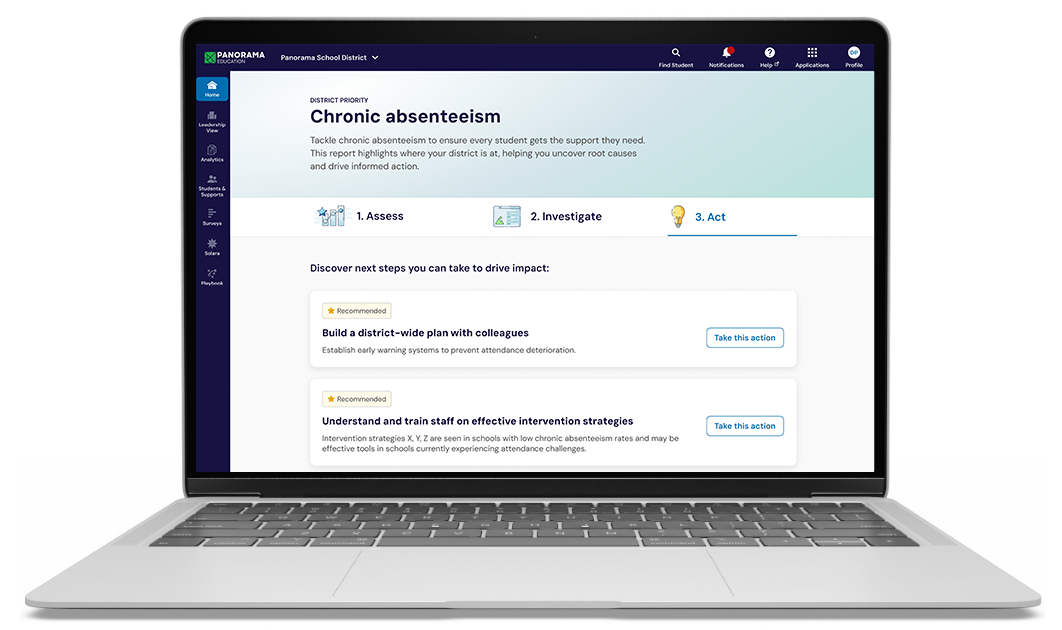A recent survey of nearly 1,400 superintendents, teachers, parents, and students revealed a striking consensus: 93% of superintendents believe student engagement is one of the strongest predictors of success in school.
The challenge? Engagement isn’t consistently defined or measured across classrooms. In fact, almost one-third of teachers say the lack of a clear, shared definition makes it difficult to track.
To close that gap, forward-looking districts are turning to tools like student voice surveys, classroom participation data, and early warning indicators. By doing so, they’re able to spot signs of disengagement early—before it impacts academic performance or leads to higher dropout risk.
Here’s a closer look at how top districts are measuring engagement and student outcomes, and why this approach is helping them achieve stronger results.
What is Student Engagement And Why is It Important?.
Student engagement is the attention, curiosity, and interest students bring to their learning. When engagement is high, students take ownership of their progress and show a genuine investment in what’s happening in the classroom.
The impact is clear: engaged students are more likely to earn higher test scores, attend school consistently, and stay on track to graduate. In contrast, disengagement often shows up as lower performance, more absences, and a greater risk of dropping out.
Why Student Engagement Measurement Drives Stronger Outcomes
When districts measure engagement, they gain an early signal of where students may be struggling well before test scores or grades reflect the problem. This makes engagement a leading indicator, allowing educators to step in with timely support rather than reacting after the fact.
Beyond the classroom, engagement data also plays a powerful role in district-level decision-making. Leading districts use it to guide funding priorities, align policies with student needs, and shape long-term strategic plans. With clear, consistent measures of engagement, leaders can move from guesswork to evidence-based action—ultimately improving both student success and district performance.
Evidence from High-Performing Districts
- Maunawili Elementary School (Hawaii): This National Blue Ribbon School increased 6th-grade sense of belonging by 17 points, ranking 23 points above state average. The school uses engagement data as a universal screener in their RTI system, enabling early identification of students needing Tier 2 or Tier 3 interventions before they fall through the cracks.
- Ogden School District (Utah): Ogden High School raised graduation rates from 76% to 95% by using engagement data to identify barriers holding students back. When survey data revealed students felt safe but lacked belonging, they implemented 2x10 relationship building, resulting in 80 more students feeling connected to adults and improved attendance and academics.
- Farmington Municipal Schools (New Mexico): The New Mexico Public Education Department (NMPED) sought data to better support districts across New Mexico. The district integrates engagement data into quarterly reviews alongside academic performance, treating student perception data as equally important as achievement metrics.
- Highline Public Schools (Washington): Serving 18,000 diverse students, Highline identified that underrepresented groups reported low sense of belonging and weak adult relationships. This data drove community listening sessions and MTSS Tier 1 supports, with schools conducting classroom walkthroughs specifically focused on belonging indicators.
Policy Alignment and Strategic Planning
Student engagement data gives districts a clearer way to meet state accountability requirements. Many states now require districts to demonstrate progress on indicators tied to creating safe, supportive school environments. By incorporating engagement metrics into those indicators, districts can show real progress on student, family, and community perceptions. This level of insight also helps state education agencies design more targeted support, especially for communities facing unique challenges such as attendance or access to mental health resources.
Funding Impact and Resource Allocation
Engagement data is also a powerful tool for financial decision-making. Districts can pinpoint where students need the most support and align budgets accordingly—whether that means funding intervention programs, expanding behavior supports, or strengthening professional development. With evidence from student engagement measures, leaders can make more confident and transparent resource allocation decisions.
Early Intervention Opportunities
Perhaps most importantly, engagement data acts as an early warning system. Districts can flag students at risk of disengagement—signaled by trends like declining attendance or dips in core academic performance—and provide support before issues escalate. This proactive approach helps schools keep individual students and groups on track, ensuring barriers are addressed before they affect long-term success.
How Leading Districts Measure Student Engagement
Top-performing districts recognize that no single metric can capture the full picture of engagement. Instead, they take a multi-dimensional approach—looking at attendance patterns, academic performance, behavior data, and student voice surveys together. This combination of quantitative and qualitative insights helps leaders see both the day-to-day realities in classrooms and the broader trends shaping student success.
By weaving these data sources together, districts can more accurately identify where engagement is strong, where it’s slipping, and how best to respond.
Collecting Student Voice Data
Many districts deploy student surveys multiple times per year to track how engagement is changing over time. Surveys like those from Panorama Education are designed to be age-appropriate and research-based, providing reliable insights into how students experience school. The data helps leaders make more informed decisions about where to focus resources and how to strengthen classroom and district-wide practices.
Early Warning Indicator Systems
Attendance, behavior, and academic data come together to form a comprehensive student profile. Districts often set risk thresholds and alerts within these systems, flagging when a student may be at risk of disengagement. With this early signal, educators can step in quickly with the right supports before problems escalate.
Behavior Indicators
Office referrals, disciplinary incidents, and requests for support are all important markers of engagement. Staff also pay attention to less formal signals, such as shifts in student participation, social interactions, or classroom demeanor, which can reveal when a student is starting to withdraw.
Academic Engagement Metrics
Engagement also shows up in how students approach learning. Teachers can look at the depth of student responses in assignments, growth in critical thinking, progress toward goals, and evidence of ownership in learning reflections. These indicators reveal not just what students are learning, but how invested they are in the process.
Family and Community Engagement Data
Districts also capture engagement beyond the classroom. Surveys of families provide insight into how learning continues at home, while participation in school events, extracurricular activities, and community partnerships highlights broader connections. Together, these data points round out the picture of how students engage both inside and outside of school.
How Panorama Helps Districts Measure Student Engagement
Truly understanding how students connect with their learning requires more than a single data point. Districts need a full picture—combining insights from student voice surveys, attendance patterns, behavioral trends, and academic performance.
With the Panorama Student Survey, districts can gather this feedback using research-based instruments available in 30+ languages. Survey results integrate seamlessly with existing data systems, giving leaders a clearer view of engagement across schools. And with access to nearly 900 evidence-based strategies in Panorama Playbook, educators can quickly take action on what they learn.
Measuring engagement with Panorama provides districts with the early insights they need to guide interventions, shape decisions, and strengthen student success.



.jpg)
.jpg)


